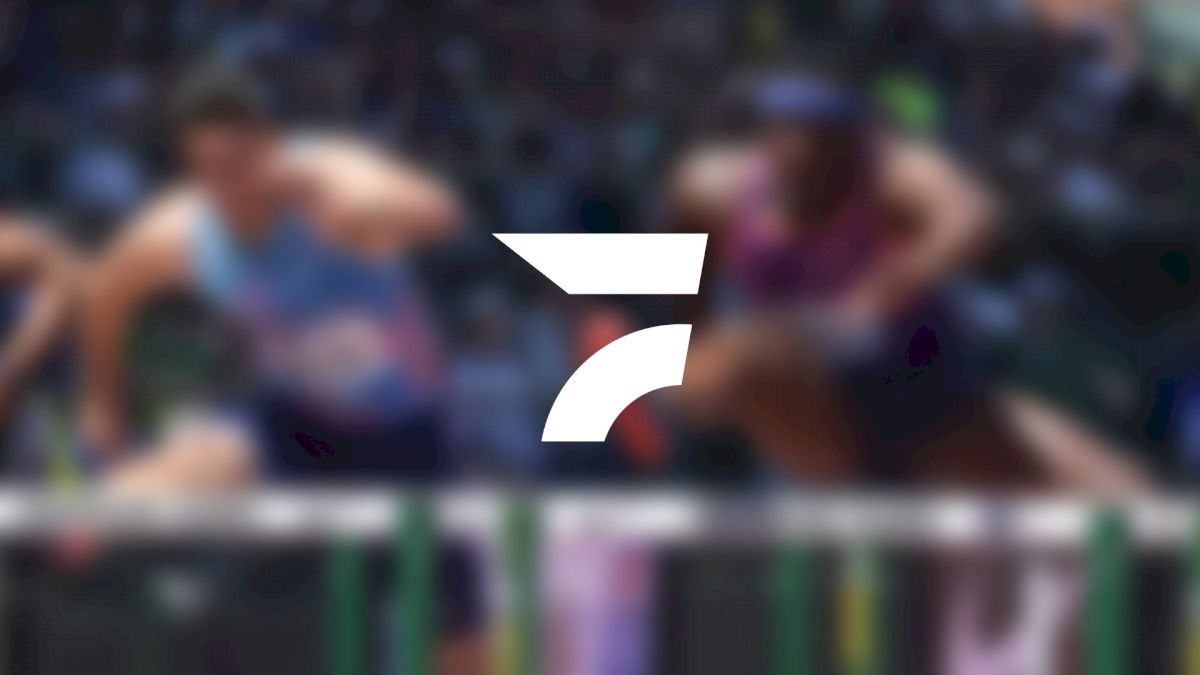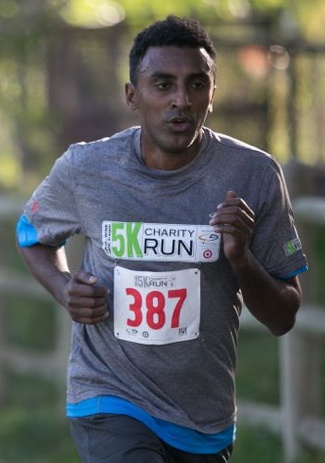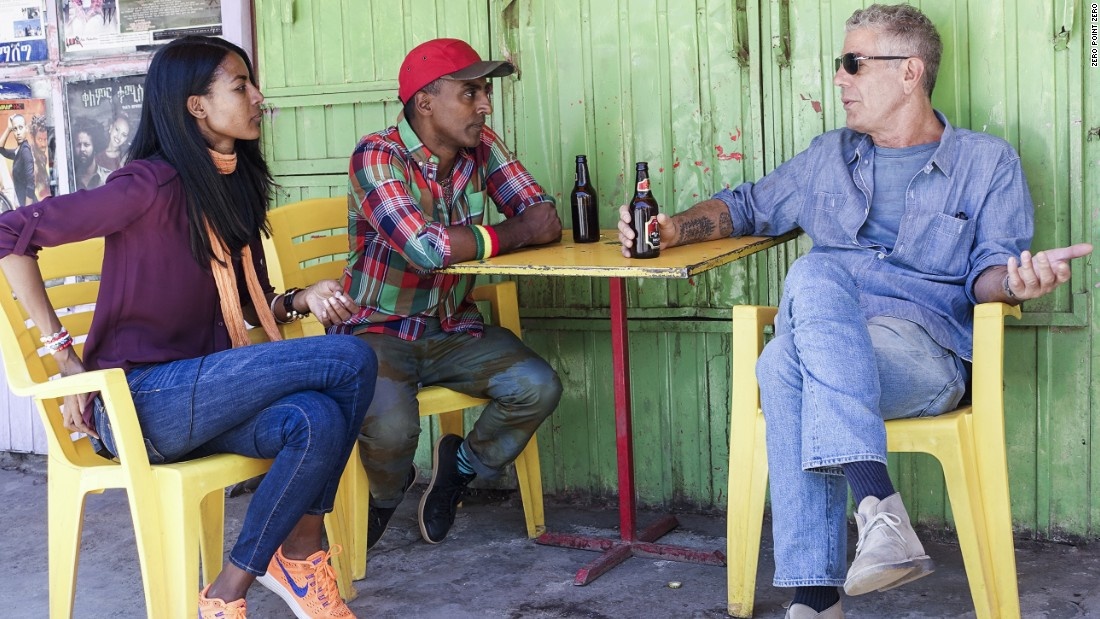New York City MarathonOct 30, 2015 by Joe Battaglia
Chef Marcus Samuelsson Hopes to Channel Ethiopian Roots In NYC Marathon
Chef Marcus Samuelsson Hopes to Channel Ethiopian Roots In NYC Marathon


NEW YORK –– In a city with approximately 24,000 restaurants, bars and cafes, you need to be exceptional to shine.
Marcus Samuelsson is a star in this world.
Born in Ethiopia, Samuelsson and his sister, Linda, were adopted by a Swedish couple after their mother died during a tuberculosis epidemic after walking miles to get treatment for her children.
It was in Sweden that Samuelsson discovered his love for cooking, and eventually trained at the Culinary Institute of Gothenburg. In 1991, he moved to the United States and worked as an apprentice at Restaurant Aquavit. Three years later, he was named executive chef at Aquavit and soon became the youngest chef ever to receive a three-star review from The New York Times. In 2003, he was named Best Chef: New York City by the James Beard Foundation.
In 2010, Samuelsson opened his restaurant Red Rooster in Harlem. The following year, he hosted a fundraising dinner for the Democratic National Committee, which President Barack Obama attended. According to the New York Daily News, the $30,800-per-plate event raised $1.5 million.
As one of the most celebrated chefs in America and arguably the most famous black chef in the world, Samuelsson makes a number of television appearances, including as a judge on Top Chef, Iron Chef America, Chopped and The Taste.
On Sunday, Samuelsson will be running his first TCS New York City Marathon to raise money for Three Goats, the charitable foundation he and his wife, model Maya, started to improve the health and wellbeing of children, young women and families in Ethiopia. We caught up with him to learn more about his running background.
Can you tell us about how you got into running and whether running was something that you picked up later in life or were you always a runner?
I got into running, really, through soccer. Our coach used to tell us that on our day off we should always run. And also being Ethiopian, every time I go back to Ethiopia people run to school, people run to work, so it was something that I always felt connected to. It’s also an amazing thing to do.
I live close to the park so I run in Central Park. It’s one of the few times that you’re completely by yourself and you can sort of decompress. It’s a great tool, for me, to think about food, or to think about menus, or think about life in general and my family.

You left Ethiopia when you were two, and went to Sweden when you and your sister were adopted. When would you say that you reconnected with that Ethiopian side of your heritage in terms of running?
I think in my late teens, early 20s is when I started to think about running a little bit more. Obviously, I was always glued in front of the TV during the Olympics when the Ethiopian runners were doing well. I aspire to… running is just such a free way to get out and see nature. You can discover cities through running. It’s probably something that I did more in my early 20s but also something as a chef that became an incredible tool. I love the teamwork in the kitchen but running really allows you to be by yourself and join a team, if you want to run with friends. It’s a dual thing, where you can do it in a group or by yourself.
A lot of other chefs who have run the New York City Marathon in the past have told stories about the lifestyle of always being in the kitchen and around food and it being an unhealthy experience with running being the thing that turned that around. Was that something that you experienced yourself?
Not really. Food has always been a major part, obviously, of my upbringing, whether it has been the Swedish side or my professional side. There is a thing about food and health. But now, when you’re right in front of the marathon, you start thinking about ‘What should I eat?’ On the running day (thinking), ‘How hungry should I be? At what station do I eat a snack? What type of snack?’
Technology has also caught up with running in terms of the evolution of food that you can eat during a race. That is totally different today than it was five-, 10-, 15-years ago. I’m probably going to eat seven-grain whole wheat bread in the morning with some peanut butter and then a banana right before, maybe a half-hour before or on the bus out. Then I will stay somewhat hungry during the race and then maybe pop in some of those healthy snacks that they have along the way.
Has your dietary regimen changed at all during your training for the New York City Marathon?
No, not really. I eat pretty okay. I probably drink too much wine and eat too late sometimes, but then it is like, so you get up the morning after anyway to do it and you have to pay for it the next morning. You know, I think that has been so amazing too. This sense of commitment that you need to have of getting up no matter what you did the night before and just doing it. Whether it’s raining, snowing, or hot, you’re doing it. It’s something that my life has been about, being committed and showing up; showing up to work; showing up for the race.
When did you start your actual training for the marathon?
I started training in the middle of the summer. I decided that I wanted to do it and I’ve had the great help of my friend Knox (Robinson), who is a professional runner. But most of the time, I have been doing it by myself, being committed. Being a chef, you know what being committed to one thing is.
What inspired you to want to take on this race?
Many things. My wife (Maya) and I have an organization called Three Goats that really inspired me. Also the fact that me and my wife just went back to Ethiopia for a CNN special and seeing how connected people are to running; kids running for water; kids running for food. If they can do that there, I can do that here and give back by raising money for the charity.
Can you tell us about your experience filming Parts Unknown with Anthony Bourdain? I was kind of struck by the scene where you went out for a run and all of the village kids joined you, and Anthony joined you, which is also no small feat.
 Running is in your surroundings when you are in Ethiopia, especially when you are in the countryside. It’s the one thing that most people – parents, kids, everyone – is doing because they can’t count on cars. It just inspires you to do more. I was lucky enough to get Tony out there, and we had fun. It was great to see him running with kids and being inspired by that.
Running is in your surroundings when you are in Ethiopia, especially when you are in the countryside. It’s the one thing that most people – parents, kids, everyone – is doing because they can’t count on cars. It just inspires you to do more. I was lucky enough to get Tony out there, and we had fun. It was great to see him running with kids and being inspired by that. When you’re in the countryside of Ethiopia, it’s so beautiful, the nature, and that excites you about going out, too. It’s high up in the mountains, so you get very tired. But there are many things that pull you put to run; the nature, the place, and the spirituality around running in that country.
Did you film that episode during your marathon training or was that beforehand?
That was before. I had pretty much made up my mind at that time and was ready to go out. It’s been a great six months and I am going to continue to run after the marathon.
Have you talked to any of the other chefs, like Nate Appleman, Richard Blais, Joe Bastianich, that have run the New York City Marathon?
I know a lot of the restaurateurs and chefs who have run. We all kind of have the same story: we all get to bed too late, maybe we’re jetlagged, whatever. But it doesn’t matter. (Training’s) like going to work. You’ve got to be there. You’ve got to show up. We also have this inner drive, and we’re committed people. We all have that inner drive that gets us through the finish line no matter what.
Do you have a goal time in mind for yourself?
I don’t. I don’t. Get me through it, how about that? That’s it. That’s my time.
So just finishing your first one is the goal?
Yup. Just finishing it. Exactly.